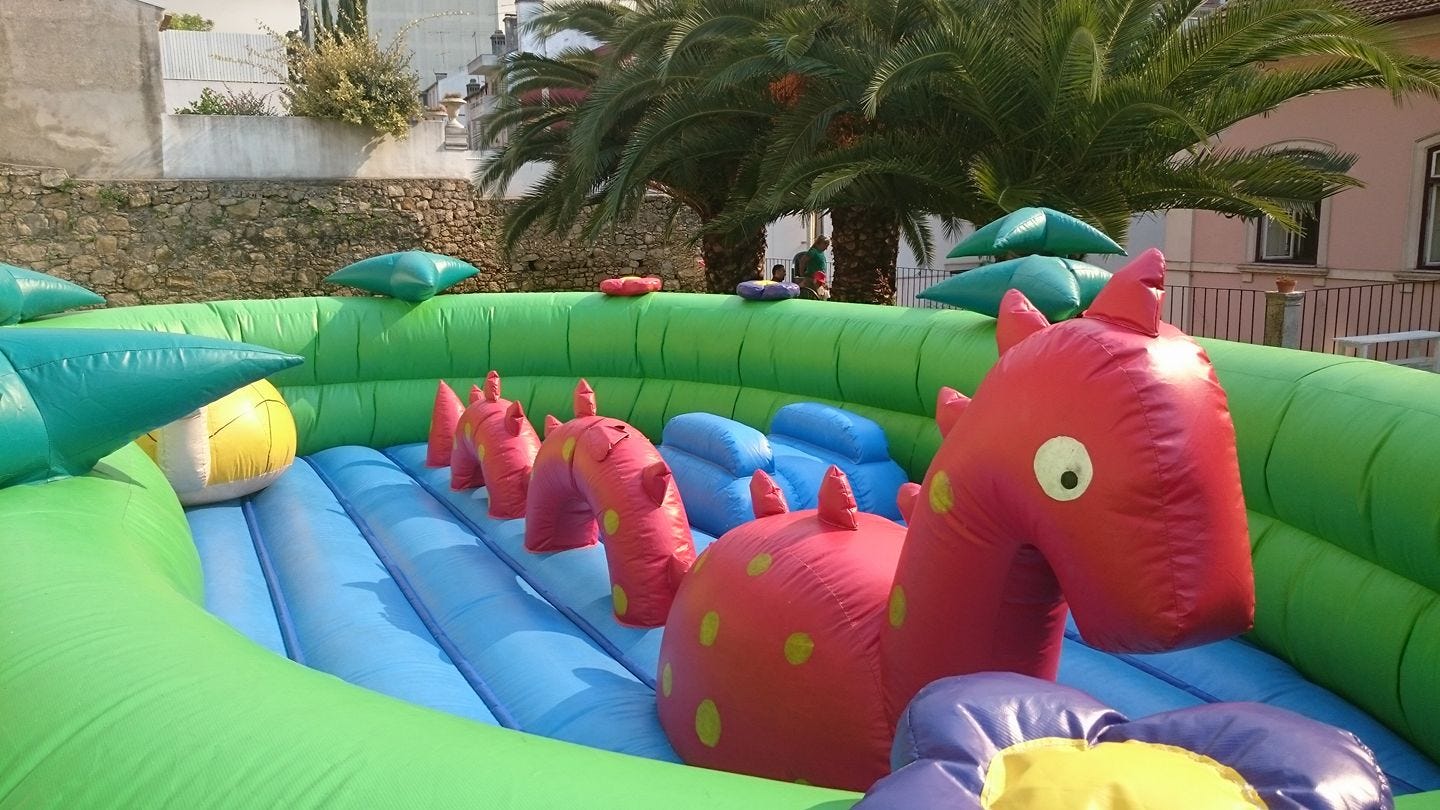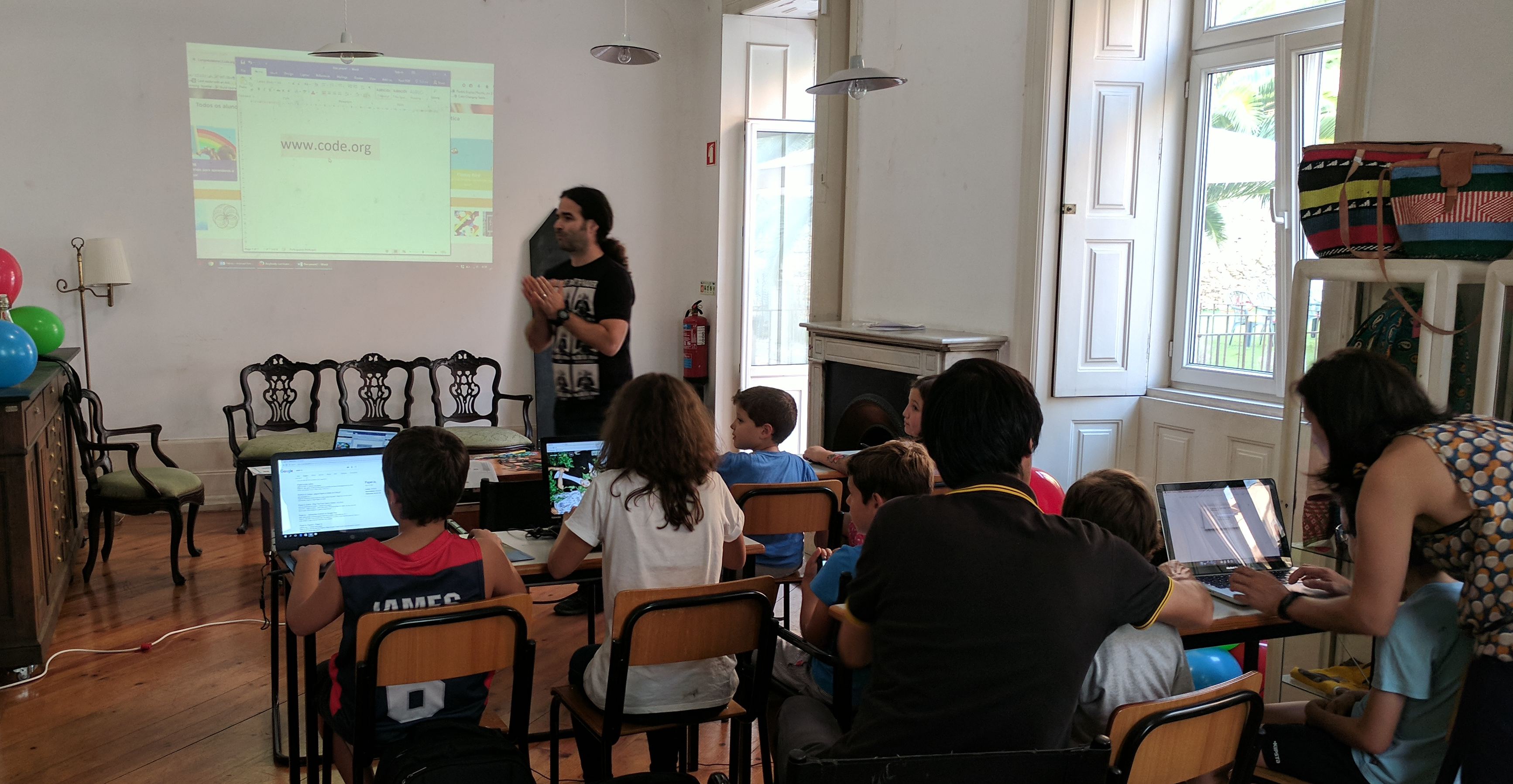GDG Kids
Select your super power and lets go on a new adventure! Together, we will complete all the quests and defeat all the villains and their sidekicks — those little bugs.

Motivation
For the past years, we’ve been organising different types of events on GDG Coimbra: programming competitions (HashCode), live streams (I/O and GDD Extended), workshops (Study Jam’s and Sessions), talks (Developer Stories), conferences (DevFest), etc. — all of these events have the same audience in mind:
People with a high interest in technology.
Depending on the event, it doesn’t require you to have a Masters in Computer Science — we’ve had different levels that go from beginner (you get to know the basics and how everything fits together) to advanced (some hidden secrets about what’s underneath a specific topic). This has been amazing — it gives us the chance to talk with almost an entire spectrum of people — that go from grad students to PhD’s and from startup developers to long term programmers. Not only we’ve met people from technological courses but also from humanity, archeology, anthropology, etc. we’ve even had the chance to meet people that were already retired and are still eager to learn and had been on our workshops since day one.
… shortly, our audience should start on people somewhere over 18 year old.
What about everyone under this age?
Today’s generation is more capable to play with a tablet/ computer than we were when we first received one. It almost seems, that somehow, this information is encoded in our genes and transmitted to our kids DNA — and now they have some sort of super-power on how to search cartoons on YouTube (there might be a future best seller book about a conspiracy theory hidden here somehow). Or, the best explanation, we’ve reached a level where UX is easily accessible to a 5 year old and they can mimic our actions, making technology truly ubiquitous from an (even) earlier stage.
With this in mind — we decided to create an event dedicated to all the kids out there: GDG Kids (yes, we’re really good naming things!).
Pilot
First, let’s admit that we had an incredible help of a local teacher, Fernando, that gave us first hand feedback on how to organize our first edition of GDG Kids.
We started by defining an acceptable range of ages. This is particularly important because there’s a huge knowledge and dexterity gap for children up to 16 years. In Portuguese schools, usually you start learning how to read at the age of 6 — so this will be our baseline — and you have the possibility to choose a more technological path at High School, which is usually when you have 15 years so we considered the 9th grade to be the top border.
Note: you should see this interval as a guideline and not as something strict. We ended up having parents that brought kids younger and older than that, because they felt that having this initial touch with programming is important.
Although we’ve shortened the age gap, there’s still a big difference in kids on both ends — that goes from the velocity at which they learn something new and are able to make the correct logic steps to complete the exercises to their interest on doing so (it’s incredibly difficult to make a kid focused on solving an exercise for more than 30 minutes).
With this in mind, we decided to split the group in half, creating two different classes:
- 6 to 10 years
- 10 to 14 years
We then go on and opened 20 seats — 10 for each class — this allowed us to guarantee that we will be able to help them as soon as they needed and to manage the pace at which they’re learning, without leaving anyone behind. We were able to do this by adding new (level) challenges to those who had already done theirs so they won’t be bored.
This is the first time that we tried to teacfh something technology related to people with half of our age (and I’m being nice here, some of them were way smaller). It took us several classes to learn basic concepts of programming and we went through a dark and stormy path and were we going to teach a 6 year old that at the end of this path there’s indeed a rainbow, and he/she can do amazing things with it.
What to choose
We’ve searched and tested several of the most used applications:
To understand which one would fit best with our classes.
They’re all pretty accessible and easy to use. Nonetheless, we’ve ended up selecting the first one — Hour of Code — for the reason, that our teacher had previous experience with this program and as soon as we invite him, he was immediately on-board to help us prepare everything.
Thank you Fernando Ferreira.
Everyone loves Minecraft (and so do we), so we’ve selected this session to be our class: https://code.org/minecraft
As a side note — we’re currently using LEGO on a new set of classes that we’re teaching, but more information about this later on.
How we put everything together
It can’t all be just work, right?
We partnered with N10 , an indoor football company and kids birthday party organisers, which kindly provided us an amazing inflatable (we made sure to test it first to confirm that it was suitable for kids) and amazing snacks so they can recover their energy.
Along with an inflatable, we also invited Playsketch, a local company that is developing an application that reads kids’ drawings and creates virtual tracks where they can play.
And of course we had Ana! She’s one of the organisers of GDG Coimbra and has an amazing talent with kids — she was:
- Face painter Making kids become super-heroes through amazing face paints
- Balloon maker Creating animals and objects from air balloons.
And the place is just amazing — we did it on Casa das Artes Bissaya Barreto due to their amazing lawn and quick access to the classroom.

Since we’re having parallel activities it’s always difficult to keep up with everything that’s happening, mainly when are kids involved that require us to have a continuous watch over them;
With this in mind, we gather 7 organisers from GDG Coimbra and split them into the various areas of the event:
- 1 welcoming our students and their parents at the entrance;
- 3 in the classroom, along our teacher to tackle any question that might arise;
- 2 on the lawn to look over the dragon on the inflatable;
- 1 on the extra activities (face painting, balloons, etc.)
And we’re only missing the schedule!
- 15h00 — Opening Doors
- 15h30 — First class starts (for 6–10 years olds)
- 16h45 — End of first class
- 16h45 — Snacks
- 17h00 — Second classe starts (for 10–14 years old)
- 17h45 — End of second class
- 17h45 — Inflatables/ Playsketch

Lessons learned
Kids are really punctual! At 14h45 (15 minutes before we open the doors) we were surprised by kids rushing their parents to enter (and they didn’t know that we had a giant inflatable on the backward!).
We should have created a third class. Although 6 years old are learning how to read, they often struggled to understand some more advanced concepts — what is expected for them to do and how to do it. Moreover, since most of them were seeing these concepts for the first time a good idea would be to print a simple cheatsheet (with the instructions learned) that they could check on the more advanced exercises.
Although this was eased by having organisers and parents giving continuous guidance — we want to try a different approach on future events: Instead of having readable material with instruction and goals, we want to try to also have visual descriptions along with them.
Future plans
Continuity.
The feedback has been amazing — and we’ve been asked by almost all parents when the second edition will be… and we’re glad to announce that at the time of this blog post we’ve partnered with the parents association of Centro Escolar da Solum Sul and with the help of Vasco Gouveia (one of the parents on GDG Kids) we’re trying out a new set of classes with LEGO Mindstorms…
… more information about this will be on its way.
Feedback
This is particularly important for future classes — at every session we’re receiving amazing feedback that help us improving the content for the next one.
If you have any suggestion or feedback about other (GDG) Kids don’t hesitate to drop us an email.
About us
GDG Coimbra, stands for Google Developer Group Coimbra and it’s an open community which brings together technology lovers to develop exciting projects, discuss ideas and share experiences or… just to grab a beer (maybe with an oreo, by the side).
Among the events organized by GDG Coimbra are: Study Jams, Developer Stories, I/O extended, Gather Hours, DevFest 2016, Workshops, Digital Meets Physical and GDG Kids.
Google Developers Group Coimbra is an independent group; our activities and the opinions expressed must not in any way be linked to Google, the corporation.
– Made with ❤️ by the team at GDG Coimbra.